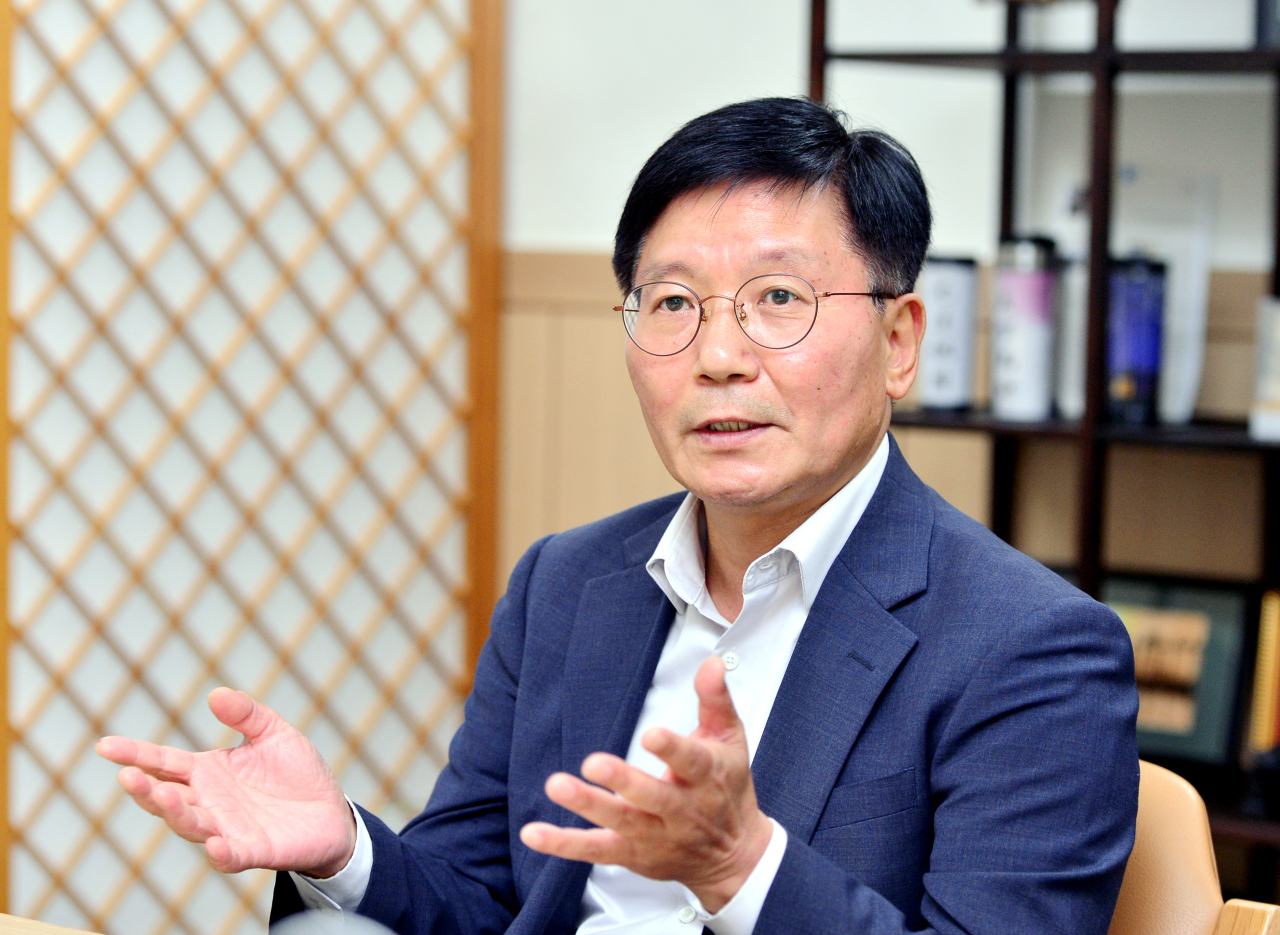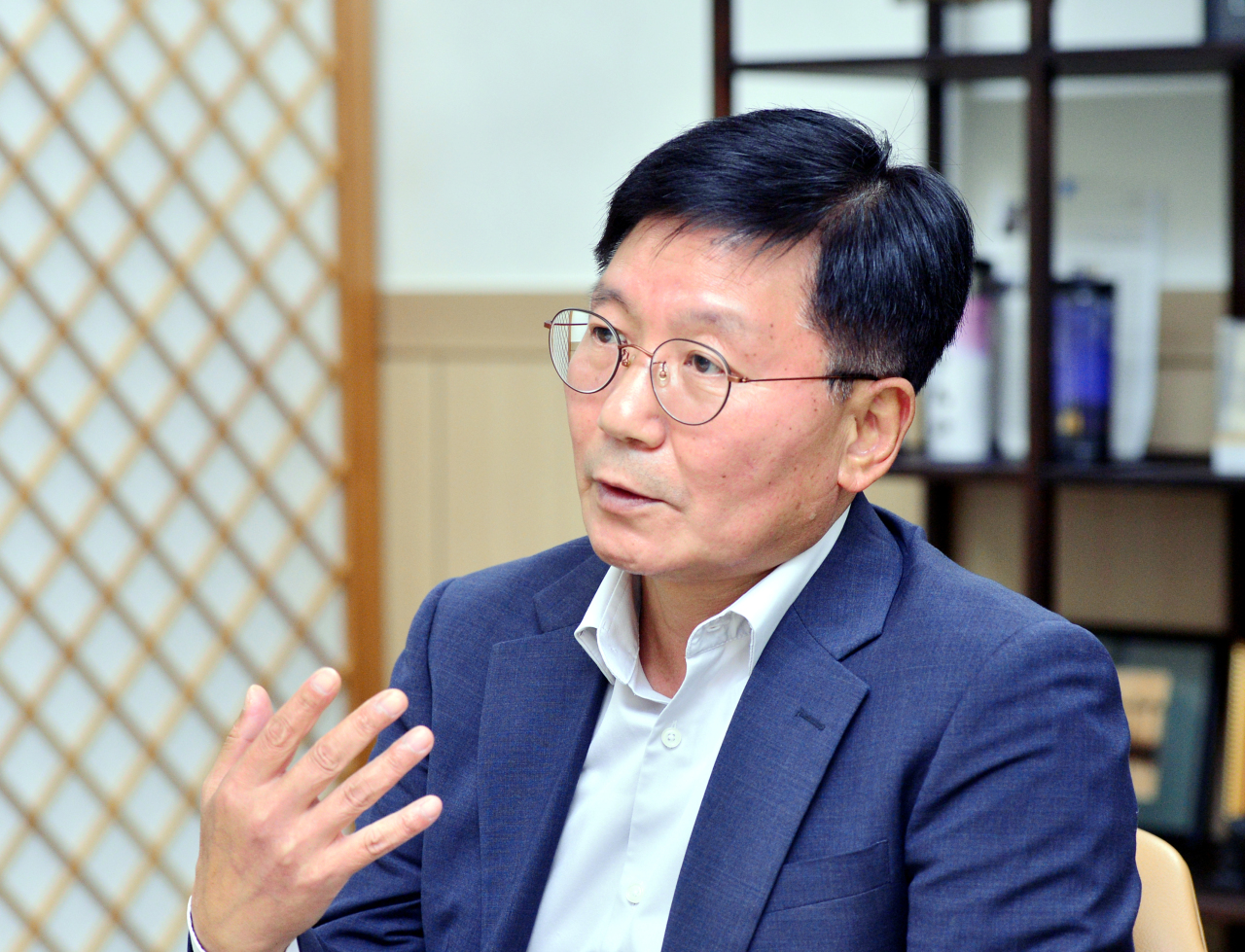 |
Kim Hyun-mo, head of the Cultural Heritage Administration (Park Hyun-koo/The Korea Herald) |
Soon after South Korea’s tidal flats were inscribed onto UNESCO’s world heritage list in July as “Getbol, Korean Tidal Flats,” the Cultural Heritage Administration announced its plan to submit an additional list of tidal flats for UNESCO to review in 2025.
While the Culture Ministry’s romanization guidelines recommend the spelling “gaetbeol,” UNESCO’s spelling is consistent with past usage by heritage experts, according to the CHA.
But the listing is facing pushback from neighbors, including residents of Incheon’s Songdo area and Ganghwa-gun, who say it will hinder economic development and affect their livelihoods.
“It would be difficult to only ask for the sacrifice of the residents,” CHA head Kim Hyun-mo said during an interview with The Korea Herald on Friday. “We have to find a way to preserve the natural heritage while making sure that local people can maintain their livelihoods.”
Kim added that he was willing to play an active role as a control tower to strike a balance between the two.
“We will have to discuss the matter with other related ministries like the Ministry of Oceans and Fisheries first, but I say that we should create programs (for residents) that do not harm the ecosystem of the tidal flats and migratory birds that use the area as a stopover site,” Kim said.
Kim said such programs would attract tourists and encourage residents to enjoy nature.
“In the long-term perspective, preserving the cultural heritage will ultimately benefit more people. For our future generations, if cultural heritage is worth preserving, we have to be more actively protective.”
During the interview, the CHA leader also talked about an obstacle that the agency faced in the process of getting the tidal flats on UNESCO’s world heritage list.
The success came as a surprise because the International Union for Conservation of Nature, a UNESCO advisory body, deferred the listing in May after a preliminary review.
At the time, the advisory body explained that while the tidal flats might be important for habitat and biodiversity, with the exception of those in Sinan, South Jeolla Province, they were not large enough to show a large-scale topographic and ecological process.
“In response to the advisory body’s decision, we promptly drew up agreements with the local governments that are managing the major tidal flats which the IUCN recommended to include, to participate in the UNESCO inscription in the future,” he said. “Despite the restrictions that we had due to COVID-19, we also actively explained the value of the tidal flats and the Korean government’s plans to submit an additional list of tidal flats for UNESCO listing in the future through videoconference to member states of UNESCO and expert groups.”
Separately, Kim talked about the need to protect the architecture at the former US military base in Yongsan, Seoul -- especially the structures that were built during the Japanese colonial period.
“There are facilities with historic value,” Kim said. “Some say that the buildings have to be demolished but we see that each architecture’s value should be studied. We should then preserve the ones that have value.”
 |
Kim Hyun-mo, head of the Cultural Heritage Administration (Park Hyun-koo/The Korea Herald) |
Kim said four bodies -- the CHA; the Ministry of Land, Infrastructure and Transport; the Ministry of National Defense; and the Seoul Metropolitan Government -- were looking closely into the buildings at the former US military base in Seoul.
When asked about the recent controversies between Korea and China over Chinese claims to Korean cultural icons such as kimchi and hanbok, Kim emphasized the important role Koreans have to play.
“I think that it is a problem that can be solved by people keeping them alive by using them daily,” he said. “For hanbok, once we start wearing it daily, then we can start thinking about the definition of hanbok.”
By Song Seung-hyun (
ssh@heraldcorp.com)









![[Today’s K-pop] Blackpink’s Jennie, Lisa invited to Coachella as solo acts](http://res.heraldm.com/phpwas/restmb_idxmake.php?idx=644&simg=/content/image/2024/11/21/20241121050099_0.jpg)